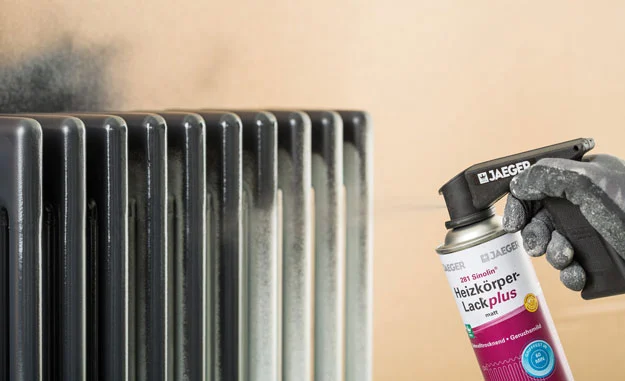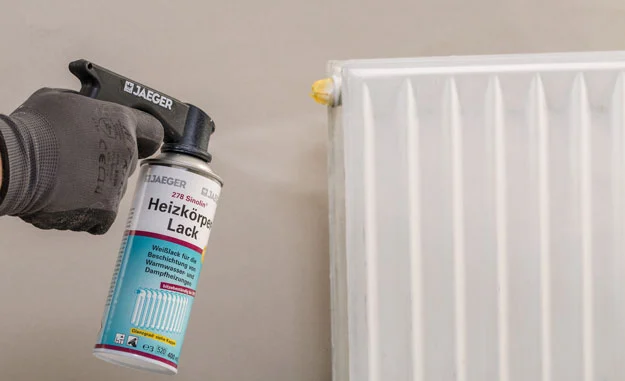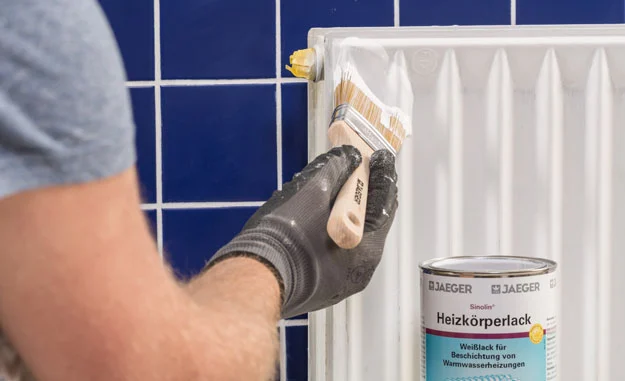Painting radiators with radiator paint
Old or yellowed radiators can simply be repainted, and don't necessarily have to be replaced with a new radiator. Special requirements apply for Radiator Lacquers. Radiators or water pipes that are regularly exposed to high temperatures, require special heat-resistant lacquers. The higher the temperature of the radiator element increases, the greater the stress on the lacquer will be.
All products are heat resistant and suitable for all hot water and steam heating units up to 150°C. Even in case of a short-term thermal overload, a cracking or flaking of the paint will not occur thanks to these highly durable Radiator Lacquers.
The Sinolin® Radiator Lacquer is a heat-resistant synthetic resin paint for the radiator coating. The high covering power and the great coverage make the processing quite easy. The good spreading behavior, as well as the shock and impact resistance make this Radiator Lacquer absolutely reliable.
Radiator Lacquer from the spray can:
For a quick and easy professional paint job, we recommend using the Sinolin® Radiator Lacquer Spray. The processing of this lacquer is very easy and convenient. Especially worth mentioning is the extremely rational and professional processing capability.
Sinolin® Radiator Paint
Sinolin® Radiator Paint is a particularly heat-resistant synthetic resin paint specially developed for coating radiators. The high hiding power and good flow of the high-quality white paint make it very easy to apply. The high impact and shock resistance also make the coating particularly durable. Added to this are long resistance to yellowing and a high gloss level. Together with its high yield, Sinolin® Radiator Paint offers excellent value for money.
Radiator paint from the spray can:
For fast and uncomplicated professional painting, we recommend Sinolin® Radiator Paint Spray. Application from the spray can is particularly practical and convenient. Even hard-to-reach places can be coated with it without any problems. And, of course, our spray paint variant also shines with its long resistance to yellowing, two gloss levels: glossy or silk gloss, excellent hiding power and outstanding impact and shock resistance. This is how professionals work!
Step by step instructions
Grinding of the radiator
Remove badly adhering, flaking paint coats. Properly grind perfectly adhering old paint with sandpaper 120 grit or within abrasive mat. Now, the radiator must be thoroughly dusted.
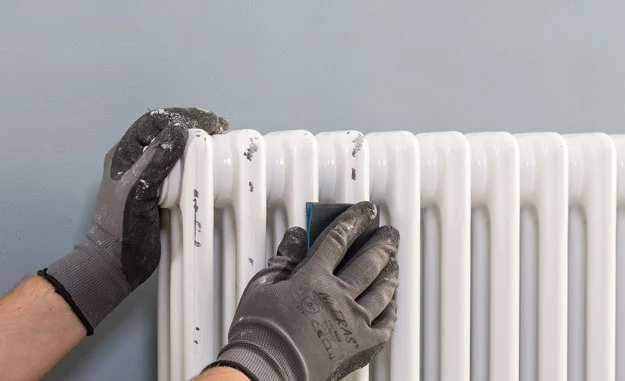
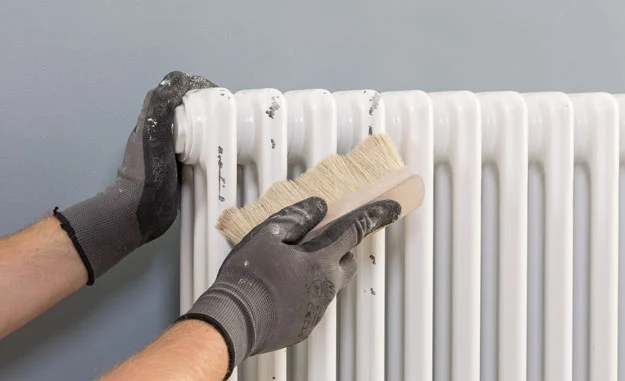
2. Priming the radiator
Remove any existing rust. Prime any bare surfaces with anti-rust primer, for example, with Multi-Primer-Spray or Multi-primer.
3. Paint the radiator
Typically, a one-time application of Sinolin® Radiator Lacquer or Sinolin® Radiator Lacquer Spray will be sufficient. A two-time application is, however, recommended if white lacquer is to be applied onto a dark primer. Do not paint on warm or hot radiators. Now let the coating dry before the radiator is turned on again. In the interest of Radiator Lacquer colour fastness, it is recommended to slowly heat the radiators to approx. 50°C after the lacquer application.
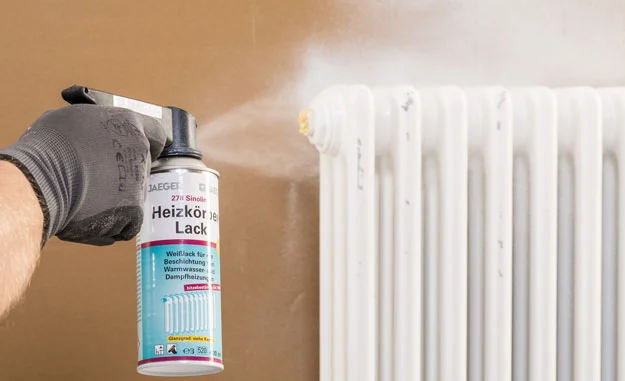
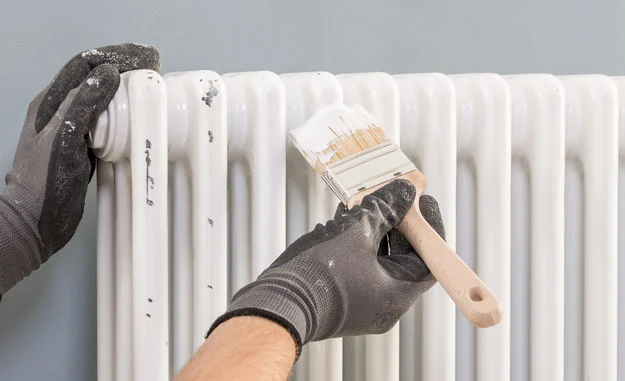
What do I have to pay special attention to?
Do not paint on warm or hot radiators. The paint should be thoroughly dry before the radiator is turned up. With regard to the color fastness of the radiator paint, we recommend heating the radiator slowly to approx. 50°C after painting.
